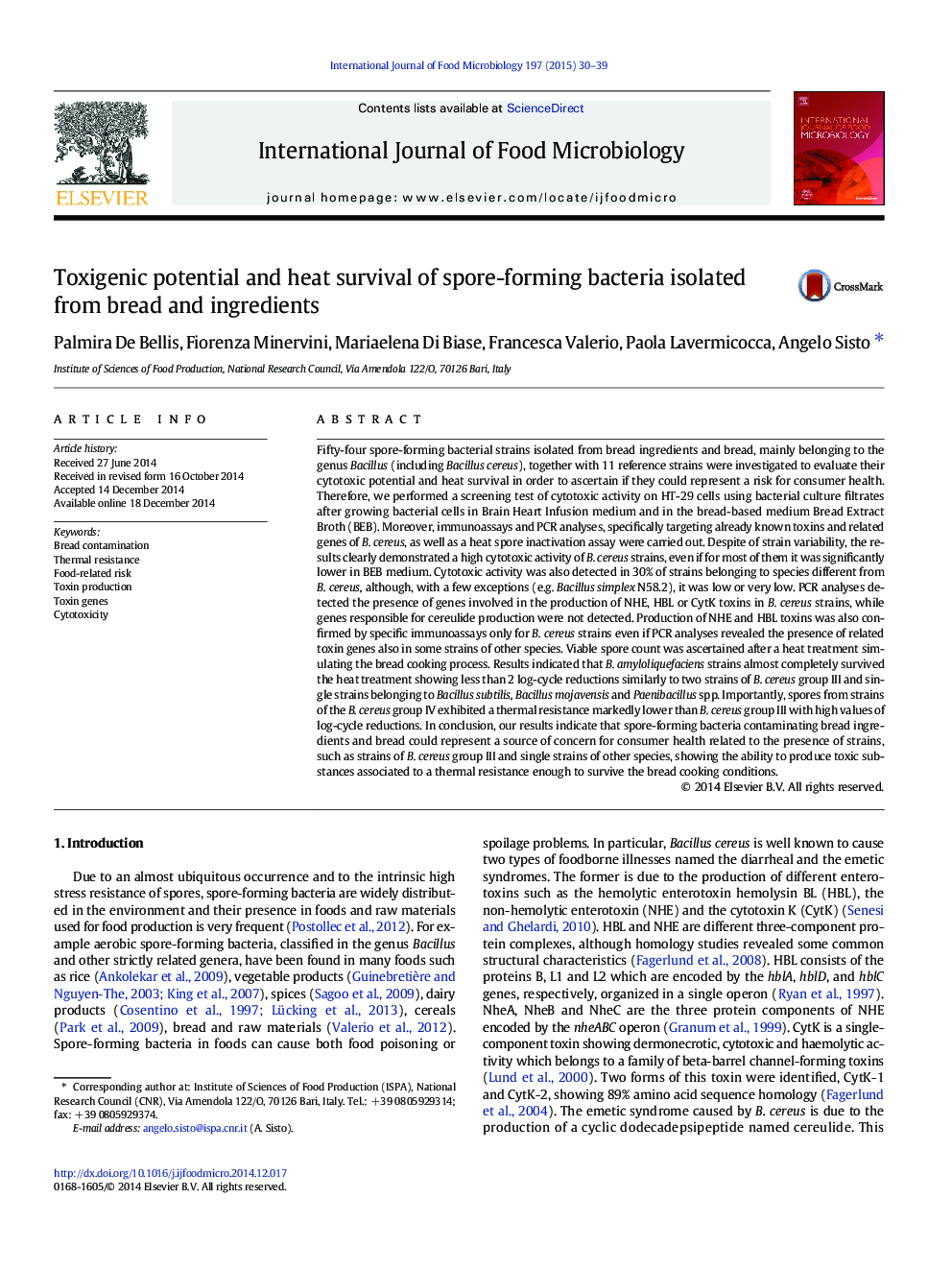| Article ID | Journal | Published Year | Pages | File Type |
|---|---|---|---|---|
| 4366670 | International Journal of Food Microbiology | 2015 | 10 Pages |
•Spore-forming bacteria contaminating bread and ingredients may represent a risk for consumers.•Toxigenic B. cereus group III survives a treatment reproducing the bread cooking process.•Thirty percent of strains different from B. cereus showed a cytotoxic potential.•Spores from B. amyloliquefaciens strains are highly thermo-resistant.•Cytotoxic activity and thermal resistance are strain-dependent.
Fifty-four spore-forming bacterial strains isolated from bread ingredients and bread, mainly belonging to the genus Bacillus (including Bacillus cereus), together with 11 reference strains were investigated to evaluate their cytotoxic potential and heat survival in order to ascertain if they could represent a risk for consumer health. Therefore, we performed a screening test of cytotoxic activity on HT-29 cells using bacterial culture filtrates after growing bacterial cells in Brain Heart Infusion medium and in the bread-based medium Bread Extract Broth (BEB). Moreover, immunoassays and PCR analyses, specifically targeting already known toxins and related genes of B. cereus, as well as a heat spore inactivation assay were carried out. Despite of strain variability, the results clearly demonstrated a high cytotoxic activity of B. cereus strains, even if for most of them it was significantly lower in BEB medium. Cytotoxic activity was also detected in 30% of strains belonging to species different from B. cereus, although, with a few exceptions (e.g. Bacillus simplex N58.2), it was low or very low. PCR analyses detected the presence of genes involved in the production of NHE, HBL or CytK toxins in B. cereus strains, while genes responsible for cereulide production were not detected. Production of NHE and HBL toxins was also confirmed by specific immunoassays only for B. cereus strains even if PCR analyses revealed the presence of related toxin genes also in some strains of other species. Viable spore count was ascertained after a heat treatment simulating the bread cooking process. Results indicated that B. amyloliquefaciens strains almost completely survived the heat treatment showing less than 2 log-cycle reductions similarly to two strains of B. cereus group III and single strains belonging to Bacillus subtilis, Bacillus mojavensis and Paenibacillus spp. Importantly, spores from strains of the B. cereus group IV exhibited a thermal resistance markedly lower than B. cereus group III with high values of log-cycle reductions. In conclusion, our results indicate that spore-forming bacteria contaminating bread ingredients and bread could represent a source of concern for consumer health related to the presence of strains, such as strains of B. cereus group III and single strains of other species, showing the ability to produce toxic substances associated to a thermal resistance enough to survive the bread cooking conditions.
